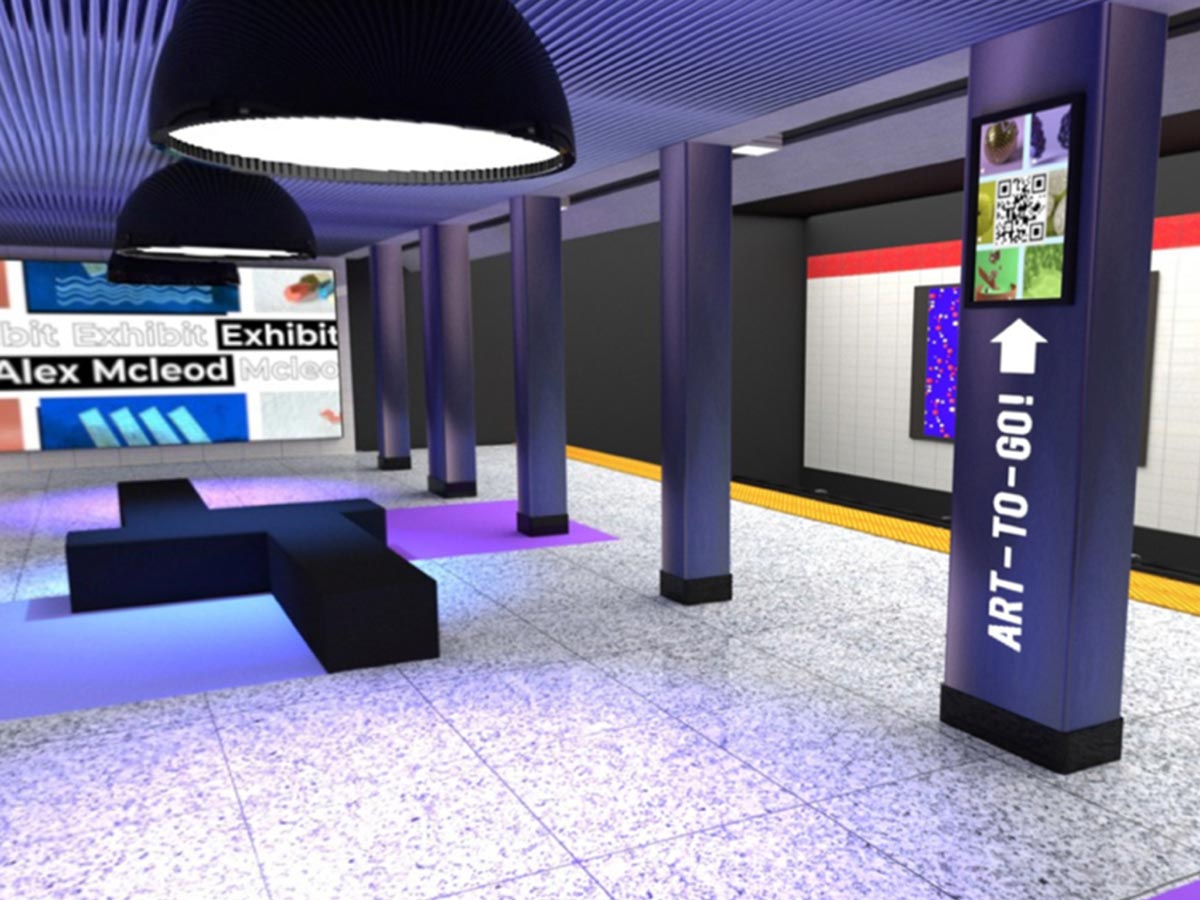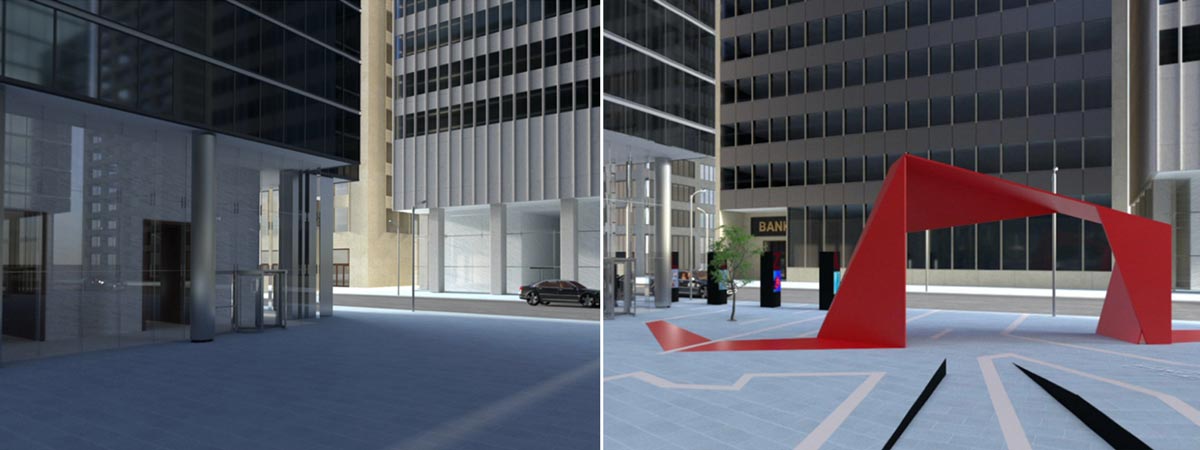A sense of place: Examining the impact of placemaking

Toronto Metropolitan University researchers explored how augmenting public spaces through placemaking affects people. They created renderings for participants to experience, including this enhanced subway station. Image courtesy of the researchers.
“Placemaking” efforts, such as the inclusion of art installations or other elements in a public space, have a positive impact on people’s feelings about their environment and increase the likelihood they will spend more time there, look up more information about the location or recommend a visit to others, found recent research.
In an interdisciplinary study, researchers from Toronto Metropolitan University’s (TMU) The Creative School and the Ted Rogers School of Management teamed up to examine how placemaking affects behavioural intentions across a variety of disciplines and techniques, such as architecture, interior design, installation art and even signage. The team included Creative Industries professor Louis-Étienne Dubois, Hospitality and Tourism Management professor Frédéric Dimanche, Interior Design professor Jonathon Anderson, Real Estate Management professor Dogan Tirtiroglu and Concordia University professor H. Onur Bodur.
Their findings were published earlier this year in the journal City, Culture and Society. More than 560 participants had the opportunity to view 360-degree renderings of five different environments: a retail store, office space, condo lobby, public plaza and transit station. Two versions of each environment were rendered, one plain and one augmented with placemaking design elements. The augmented versions led to an increase in participants reporting their intentions to seek and share information about the environment or to recommend the space to others. The placemaking-designed versions of all five environments meant respondents were 50 per cent more likely to spend time there than the non-placemaking versions.

Two versions of each space, one with and one without placemaking features, were rendered as part of the research. On the left is the plain version of a public plaza and on the right is the augmented version. Images courtesy of the researchers.
Professor Dubois approached the topic through the lens of his expertise in creative industries management, explaining that it can be difficult to convince decision-makers to invest in placemaking. “It’s always been a tough sell,” said professor Dubois, who notes that the costs can be a barrier without tangible benefits to show for the investment.
As Professor Dubois explained, the researchers were approached and supported by industry players with the hope that the data generated could be used to make the case for placemaking. These partners include builder and developer The Daniels Corporation, design firm Entro, architecture and design firm Lemay and creative placemaking and public art company MASSIVart.
From a tourism perspective, professor Dimanche says the goal for placemaking is to create an emotional and psychological relationship between the place and the people visiting it.
“Why do we want to create emotional connections? Because that’s what people remember. It creates memories,” he said, adding that a sense of place is important in the competitive tourism world. If you successfully evoke a sense of place, people will share both online and with their social circles. The reactions to the environments created for this research show that people are genuinely affected by placemaking.
Working with a team of research assistants, professor Anderson created the designs and rendered them into virtual environments for the participants to explore on either a computer monitor or with a virtual reality headset. He was surprised at how favourable the results were, noting that this hard data validates the practice of design and shows clients that placemaking elements add value.
“It’s showing that it’s not a luxury or want, it’s a need,” said professor Anderson.
Professor Tirtiroglu’s perspective is based on his expertise in finance and real estate. “How can we add extra value? That’s a finance question,” he said. While placemaking gets little to no coverage in financial research, he has found that when he goes to speak to people during his research about locations, elements such as unique architecture or art installations are an important component discussed. A good location is not enough on its own if it is unattractive.
“Placemaking can, over time, change foot traffic,” said professor Tirtiroglu. “The foot traffic means, to a finance person, cash flow.”
Read Augmenting places: The impact of placemaking on behavioral intentions (external link, opens in new window) in City, Culture and Society to learn more about the research team’s findings.
Related links
Transdisciplinary study reveals positive impact of placemaking